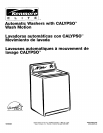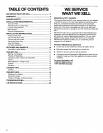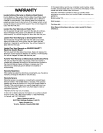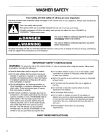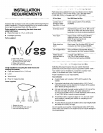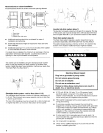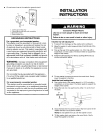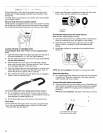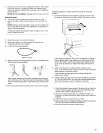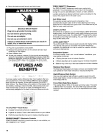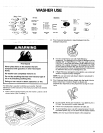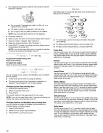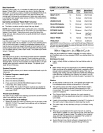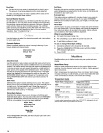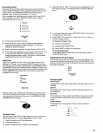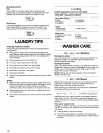
7. Attach the hose with the red coupling to the HOT water (right)
inlet valve. Screw on coupling by hand until seated on the
washer. Using pliers, tighten the couplings with an additional
two-thirds turn.
NOTE: Do not overtighten. Damage to the valves can result.
Check for leaks
8. Turn on the water faucets and check for leaks. A small
amount of water might enter the washer. You will drain this
later.
NOTE: Replace inlet hoses after 5 years of use to reduce the
risk of hose failure. Record hose installation or replacement
dates for future reference.
Periodically inspect and replace hoses if bulges, kinks, cuts,
wear, or leaks are found.
Properly leveling your washer prevents excessive noise and
vibration.
1. Check the levelness of the washer by placing a level on the
top edge of the washer, first side-to-side, then front-to-back.
1. Drape the power cord over the console.
2. Move the washer to its final location and remove any
cardboard used to move washer.
3. Locate the tie strap (supplied).
Beaded Tie Strap
4. Wrap the drain hose to the laundry tub leg or standpipe with
the tie strap. (See illustration.)
\
If the washer faucets and the drain standpipe are recessed,
put the hooked end of the drain hose in the standpipe. Tightly
wrap the tie strap around the water inlet hoses and the drain
hose.
Do not force excess drain hose back into the rear of the washer.
2,
3.
If the washer is against a wall, move the washer out slightly
before tipping back. If the washer is not level, prop up the
front of the washer with the wood block and adjust the feet
up or down as necessary. Repeat this step until washer is
level.
After the washer is in the final location and level, use a
%6 in. (1.43 cm) open-end wrench to turn the nuts on the feet
tightly against the washer cabinet.
If the nuts are not tight against the washer cabinet, the
washer may vibrate.
Tilt the washer forward until the rear of the washer is at least 4
in. (10.2 cm) off the floor. You may hear the self-adjusting rear
feet click into place. Lower the washer to the floor.
1. Check the electrical requirements. Be sure that you have the
correct electrical supply and the recommended grounding
method. (See "Electrical Requirements.")
2. Check to be sure all parts are now installed. If there is an
extra part, go back through the steps to see which step was
skipped.
3. Check to be sure you have all of your tools.
4. Dispose/recycle all packaging materials. Keep the styrofoam
for use if the washer should be transported.
5. Check to be sure the water faucets are on.



